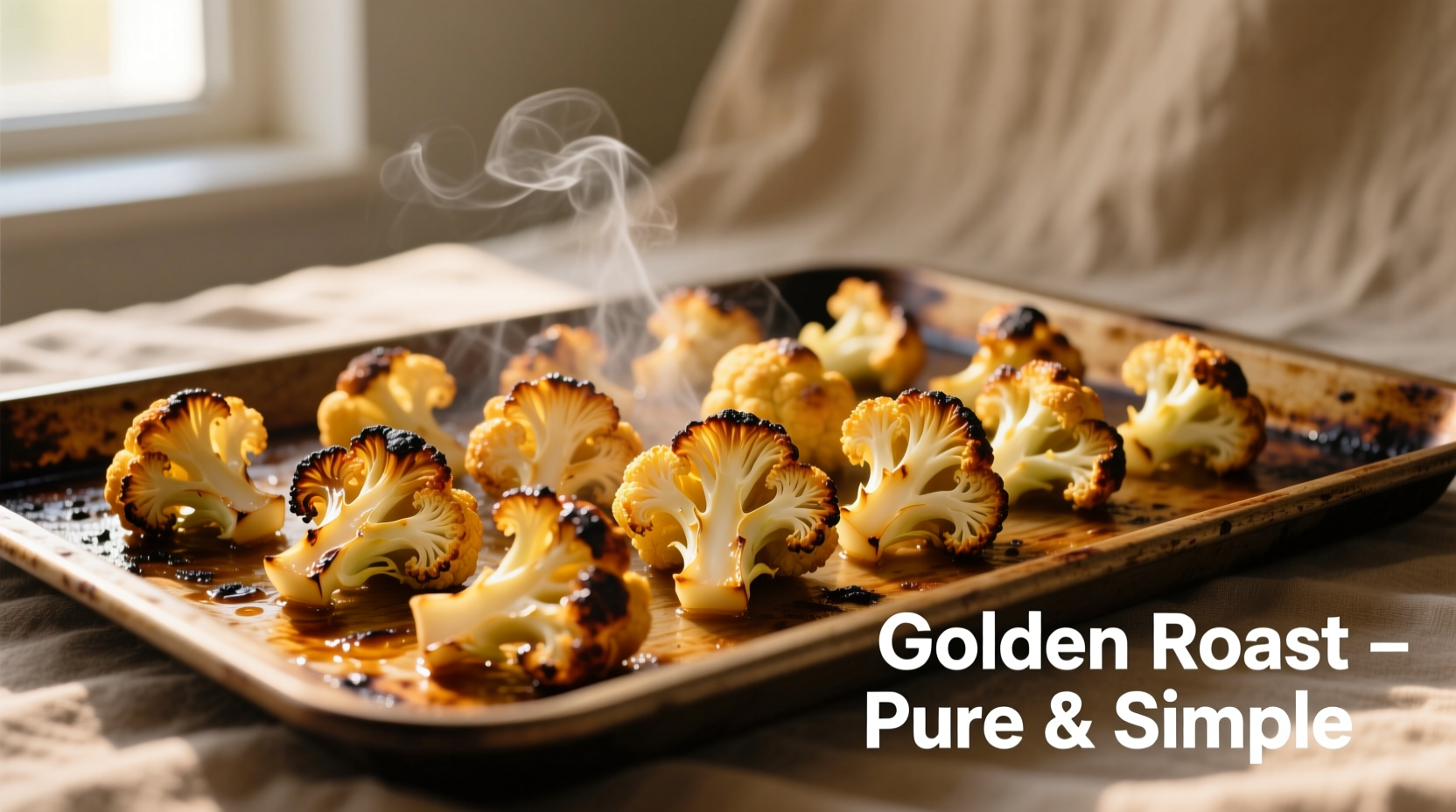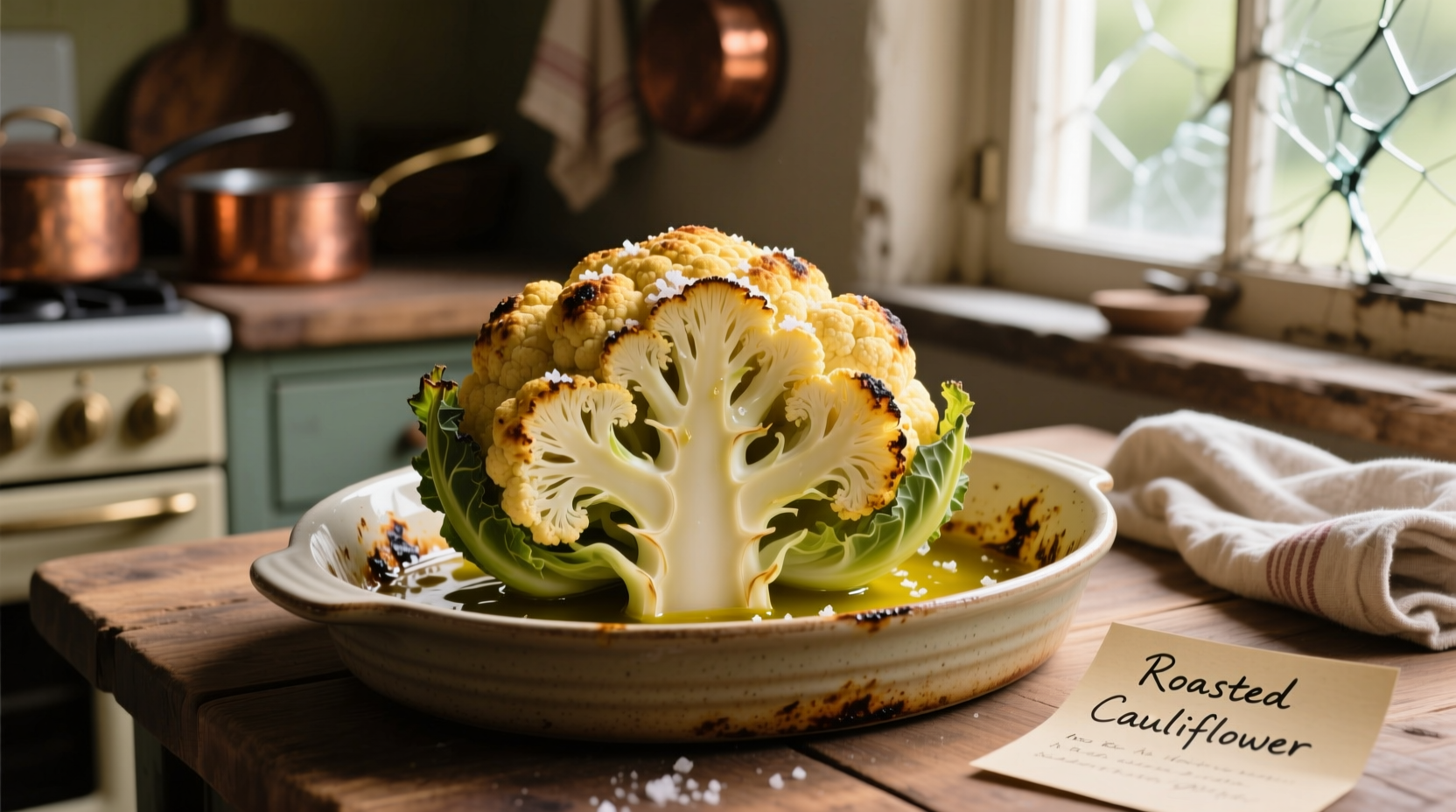Preheat your oven to 425°F (220°C), toss cauliflower florets with 1½ tablespoons olive oil, 1 teaspoon salt, and 1½ teaspoons garlic powder, then spread in a single layer on a parchment-lined baking sheet. Roast for 25-30 minutes, flipping halfway, until golden brown and fork-tender with crispy edges. This foolproof method delivers perfectly caramelized cauliflower every time with minimal effort.
Discover how to cook cauliflower in the oven to achieve restaurant-quality results at home. This comprehensive guide reveals the precise temperature, timing, and technique that transforms humble cauliflower into a crispy, caramelized side dish that even vegetable skeptics will love. Whether you're meal prepping, seeking healthier alternatives, or simply want to elevate your weeknight dinners, this oven-roasted cauliflower method delivers consistent perfection with minimal active time.
Why Oven-Roasting Beats Other Cooking Methods
When exploring how do I cook cauliflower in the oven, understanding the science behind dry-heat cooking makes all the difference. Unlike boiling or steaming that leaches nutrients and creates soggy texture, oven roasting triggers the Maillard reaction—the chemical process where amino acids and sugars interact at high temperatures to create complex flavors and appealing golden-brown color. According to the American Chemical Society, this reaction occurs optimally between 285-330°F (140-165°C), explaining why our recommended 425°F temperature delivers superior browning while maintaining internal tenderness.

Essential Preparation Steps Before Oven Time
Mastering how to cook cauliflower in the oven starts long before you preheat. Follow these preparation steps for flawless results:
Selecting the Perfect Head
Choose cauliflower with tight, creamy-white curds and crisp green leaves. Avoid any with brown spots or separation between florets. A medium-sized head (about 2 pounds) yields approximately 4 cups of florets—ideal for even roasting without overcrowding the pan.
Cutting Technique Matters
Instead of random chopping, cut uniform 1½-inch florets. This precision ensures even cooking—smaller pieces burn while larger ones remain undercooked. Keep some stem pieces attached to florets; they contain valuable fiber and roast beautifully alongside the curds.
Optimal Roasting Conditions Compared
| Temperature | Cooking Time | Texture Result | Best For |
|---|---|---|---|
| 375°F (190°C) | 35-40 minutes | Soft throughout, minimal browning | Mashed cauliflower base |
| 400°F (205°C) | 30-35 minutes | Moderate crispness, even cooking | Meal prep containers |
| 425°F (220°C) | 25-30 minutes | Maximum caramelization, crispy edges | Restaurant-style presentation |
| 450°F (230°C) | 20-25 minutes | Deep browning, potential burning | Specialty recipes needing intense flavor |
The Foolproof Cooking Process
Now that you understand how do I cook cauliflower in the oven properly, follow these precise steps:
Dry the Florets Thoroughly
After washing, spread florets on clean kitchen towels and gently pat dry. Moisture is the enemy of crispiness—wet cauliflower steams instead of roasts. For best results, let florets air-dry 10 minutes while preheating your oven.
Oil Application Technique
Place dried florets in a large bowl. Drizzle with oil, then use your hands to coat evenly—this tactile method ensures every surface gets oil without overcoating. Add seasonings directly to the bowl and toss again. Never pour seasonings directly onto the baking sheet, which creates uneven distribution.
Pan Selection and Arrangement
Use a heavy-duty rimmed baking sheet (not a glass dish) lined with parchment paper. Arrange florets in a single layer with space between pieces—overcrowding causes steaming. For extra crispiness, place a wire rack on the baking sheet and arrange florets on the rack.
Midway Flip for Even Browning
At the 15-minute mark, rotate the pan front-to-back AND flip each floret individually using tongs. This double action ensures even exposure to oven heat. Don't skip this step—it's the secret to all-over caramelization rather than one-sided browning.
Troubleshooting Common Roasting Issues
Even when following how to cook cauliflower in the oven correctly, problems can occur. Here's how to fix them:
Soggy Bottom Syndrome
If your cauliflower steams instead of roasts, you've likely overcrowded the pan or skipped the drying step. Solution: Use two baking sheets instead of one, or increase oven temperature by 25°F and reduce cooking time slightly.
Burnt Edges, Raw Center
This indicates uneven floret sizes. Next time, cut more uniformly and remove tiny pieces before roasting. For current batch, cover loosely with foil and continue roasting until center softens.
Flavor Variations for Every Palate
Once you've mastered basic how do I cook cauliflower in the oven technique, experiment with these professional variations:
Mediterranean Style
Add 1 teaspoon dried oregano, ¼ teaspoon red pepper flakes, and the zest of one lemon to the oil mixture. Finish with fresh parsley and a squeeze of lemon juice after roasting.
Smoky Paprika Version
Replace garlic powder with 1½ teaspoons smoked paprika and ¼ teaspoon cumin. Sprinkle with crumbled feta cheese during the last 5 minutes of cooking.
Serving and Storage Guidelines
For optimal texture, serve immediately after roasting when crispness peaks. If meal prepping, store cooled cauliflower in an airtight container with paper towel lining to absorb moisture. Reheat in 400°F oven for 8-10 minutes to restore crispiness—microwaving makes it soggy. According to USDA Food Safety guidelines, cooked cauliflower remains safe for 4-5 days refrigerated.
When Oven Roasting Isn't Ideal
While oven roasting delivers superior texture for most applications, certain situations call for alternative methods. When preparing cauliflower puree or soup base, steaming preserves more water-soluble nutrients. For quick weeknight meals with under 15 minutes total time, air frying works better. Understanding these context boundaries ensures you choose the right technique for your specific culinary goal.











 浙公网安备
33010002000092号
浙公网安备
33010002000092号 浙B2-20120091-4
浙B2-20120091-4